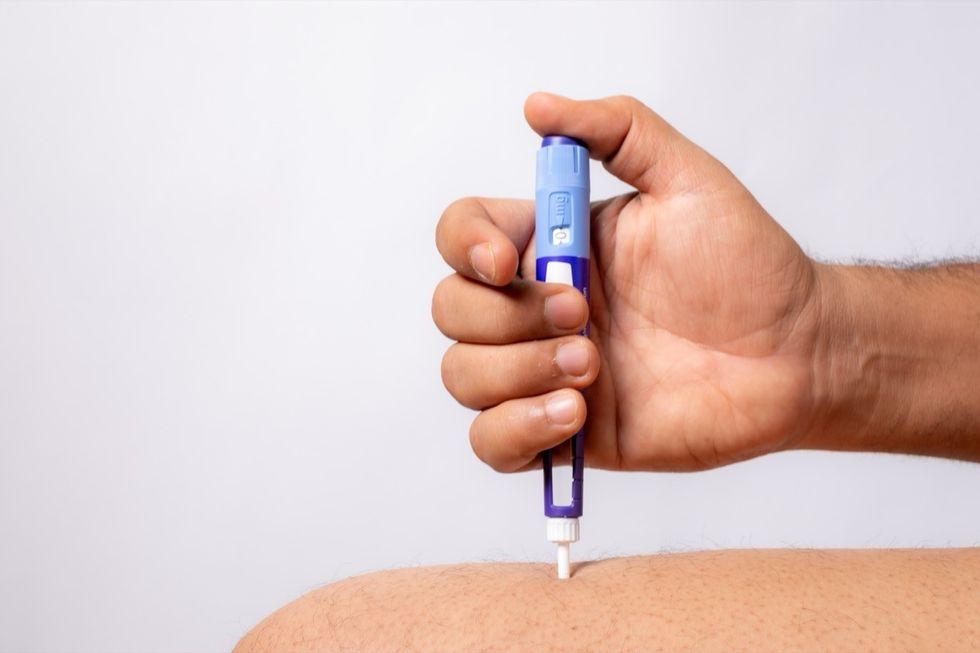It’s hard to deny the benefits of drugs like Ozempic and Mounjaro. While they’re only approved for the treatment of type 2 diabetes, the medications are often prescribed off-label for weight loss due to their effectiveness in helping patients shed stubborn pounds. Both treatments also have sister drugs, Wegovy and Zepbound, respectively, that have the same active ingredient and areapproved for chronic weight management. But while it was previously thought that all of these glucagon-like peptide-1 (GLP-1) inhibitors work by making people feel fuller for longer and thereby making them eat less, a new study suggests they work differently—and have an added benefit.
RELATED: Ozempic Is Not the Most Effective Drug for Weight Loss, New Study Says.
Researchers at St. Vincent’s University Hospital (SVUH) in Dublin, Ireland, found that the treatments may also speed up metabolism, specifically visceral adipose tissue (VAT) metabolic activity. Results were published on Aug. 22 in the Journal of the Obesity Society, also suggesting that people who had “low metabolic activity” before treatment benefitted the most.
“This study challenges the main narrative about these newer treatments which is that they simply make you eat less, and that any action on energy burn is minimal,” lead study author Donal O’Shea, MB, BCh, BAO, MD, professor at SVUH and University College Dublin School of Medicine, said in a press release.
He continued, “The strength of the association is surprising given the relatively small numbers studied and suggests this increase in metabolic activity is a significant contributor to how these drugs work”
The study included 30 patients who took GLP-1 medications for 24 weeks. All participants had obstructive sleep apnea (OSA), and they were randomly assigned to receive a GLP-1 therapy-based weight loss regimen, continuous positive airway pressure (CPAP), or a combination of the two for the 24-week period.
Researchers took imaging of participants’ fat in their abdomen by using a PET-CT scanner before and after treatment. Those who took the GLP-1 drugs experienced both weight loss and increased metabolic activity in the VAT, or fat around the organs. This change wasn’t seen in patients who received CPAP therapy.
RELATED: This New Probiotic Is Being Called a Game-Changer for Weight Loss.
“It always seemed oversimplistic to me that these new treatments were just making people eat less,” O’Shea added in the press release. “So this study finding is an exciting step forward in our understanding of how these new medicines for obesity work. The findings also provide science to support the fact that the treatment of obesity is not simply to eat less and move more—that’s the prevention piece—treatment is more complex than that.”
According to Cleveland Clinic, people with faster metabolisms or a faster basal metabolic rate (BMR) burn many calories even when resting. Those with slower metabolisms and BMRs need fewer calories (energy) to function. However, contrary to popular belief, a fast metabolism doesn’t “necessarily lead to thinness,” the hospital adds. People who are overweight or obese often have fast metabolisms.
The latest study suggests that people taking GLP-1s aren’t just eating less; instead, their bodies are using more energy to carry out basic functions of daily life. Still, more research is needed.
“Safe medical treatment for obesity is still in its infancy and we need to understand fully how the treatment works. Understanding how these agents increase energy burn should be an important part of future research,” O’Shea argued. “I hope the companies involved in the development of these treatments will examine this area in more detail because these are very expensive studies to carry out and we are very grateful to the Health Research Board and University College Dublin for supporting it.”

